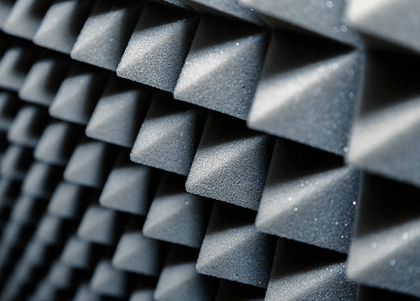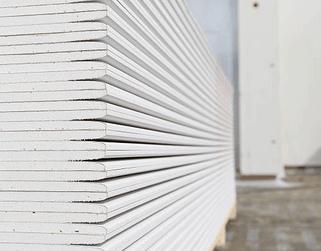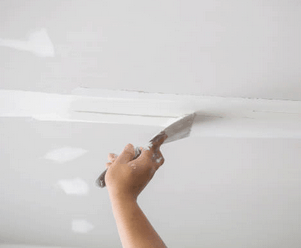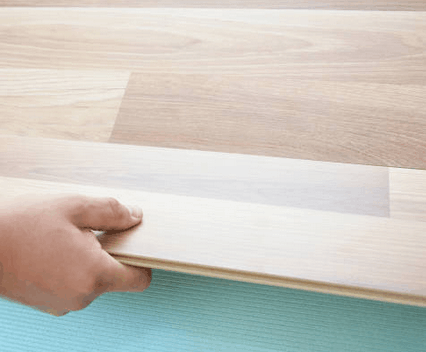Condo living has become a popular housing option for people in Toronto. This is because the concept of small spaces seems more convenient for the people now. Also, because of urbanization, the population in the city is increasing. However, one thing with the condominium buildings is that the units are mostly adjacent to each other.
Also, since the construction company looks carefully into the money it is spending, the walls are not made of particularly thick substances. That is, it is not necessary that the acoustics of the building is perfect, and there is no noisy occurrence in the tower.

Thus, improper acoustics can hamper your living experience. The impact of these little things can spoil your peace of mind too. Therefore, make sure you take specific measures to reduce the effect of these disturbances.
Therefore, it does seem like a logical approach for an adequately soundproofed condo building, as it can make your life easier. Alongside, maintaining the acoustics of the tower is essential. These different steps will also increase the life of your unit.
It is an ideal decision to soundproofing the common or shared partitions of the condo. There are a few things that you should be keeping in mind while picking the sound insulation material. This is because the material is going to determine the noise-canceling attribute of the condo and impact its acoustics as well.
Are you wondering how to soundproof a condo? Here are a few great ways in which you can do soundproofing of your common condo walls and reduce the airborne noise:
 #1 Installation of sound barriers
#1 Installation of sound barriers
Installing sound barriers is the most common choice of people in the city to eliminate the extra noise. However, one cannot forget that the audio barriers solution is one of the most expensive sound insulation ways.
The premium quality and effective equipment for sound insulation can be a little on the expensive side. Therefore, it sometimes does lead to modification of the original structure of the condo. Therefore, before you plan for these methods, seek proper permissions for it that can help in decreasing the noise that enters your living space.[1]
#2 Utilizing The decoupling technique
Decoupling is a reasonably simple procedure used for soundproofing the condo walls. In this method, the wall is separated into two different sections. This helps in blocking the varied sounds from passing through two coatings.
The popular way to do decoupling is by adding an additional drywall coating to the existing coating. However, you need to see that there is a gap between the sheets. For better effect, some people also opt for filling this gap with insulation foam. This foam helps in adding an additional layer that prevents sound transmission through the walls. Thus, resulting in a soundproofed condo.
 #3 Extra drywall
#3 Extra drywall
Another famous way in which you can do soundproofing of the walls is by increasing the number of layers. This makes the thickness of the walls more. Thus, making it difficult for a variety of sounds to leave through. Also, drywall is not that pricey, and therefore, you can buy it easily, and it doesn’t burn a hole in your pocket.
There are a few other denser products available as well. However, these materials are going to cost you more as well. Also, denser materials allow the vibrations to leave through. Therefore, the effectiveness of soundproofing also comes down.
#4 Opting for audio blankets
Using audio blankets is practically a more flexible way of soundproofing the condominium walls. You can simply hang them over the walls or windows of the unit for soundproofing. Usually, quilted fiberglass is present in them as it helps in better soundproofing.
Audio blankets are a great way of soundproofing the condo. However, these can be a little expensive option. Also, they are not overly attractive. Therefore, to maintain the aesthetics of the condo, you will need something extra to place in front of them or hang something beautiful to cover it up.
#5 Damping
Another way of soundproofing can be damping as it helps to reduce the number of vibrations that can pass through the walls of the house. It does so by adding an extra absorbing element that is dense to the walls. You can either opt for installed insulation foam in the wall cavity. Or, you can choose for Green Glue as well. Damping is quite effective when it comes to soundproofing the walls.
 How to do wall soundproofing
How to do wall soundproofing
Here is how you can do soundproofing of the walls of your condo:
- Find out the source of the noises that you hear in concrete partitions. Based on the construction of the condo, there is a chance that every surface might not need soundproofing. So, to find out the source, start with turning off the noises. Then you should go around the house and find the source of noises that you hear from the neighbors or the surroundings.
- With the help of a pry bar, you should remove the baseboard and also trim from the walls. Place all the trim and baseboards aside as you will have to reinstall them later. After that, you should remove the electrical coverings and also the wall fixtures with the use of a screwdriver. For soundproofing the walls, you should apply another layer of drywall. Also, you should place noise deadening Green Glue in between the layers of the wall.
- Find out the measurements for the wall and cut drywall panels that you will have to fit. You can use a utility knife to cut the drywall. Then start with snapping the drywall at the scored mark.
- Put the drywall on a flat surface with the front side down. You should then cut homes for outlets before mounting the boards.
- Put a tube of the Green Glue into a caulking gun and then unseal the tip of that tube. You can use a nozzle to open the tip and cut a small opening.
- Use a zig-zag pattern to place a bead on the back of the drywall with the help of the Green Glue. Then cover the surface of the drywall with the glue. These lines of the glue should have a distance of 2-3 inches from the edges of the drywall.
- Then put the surface with the glue against the already existing wall of the condo. You will have to find the wall studs with a stud finder and then screw the drywall back in place with screws. You should place one screen at a distance of 7 inches and right along the stud. On the inside studs, you should place a screw every 12 inches. Once this is done, apply a bead of green glue between the drywall and on the seams to seal them.
- Replace the trim and baseboard with a hammer. Then, you can paint the drywall and also replace the outlet covers and fixtures such as windows and doors with a screwdriver. Make sure it is in level.
 Soundproofing of floors
Soundproofing of floors
- For soundproofing your floors, you should start by taking the floor covering off to lay a soundproofing substance. You will have to place this on the subsurface. You will have to lift the carpet on the floors and also the underlayment from the floor. Or you will have to pull the hardwood up at the nailed locations. Take the baseboards off and set the flooring aside.
- Start with sealing all the cracks on the hardwood. You can use an acoustical caulk and also a metal tape. As an underlayment, you will need to roll layers of mass loaded vinyl barrier on the floor. Mass loaded vinyl should be rolled across the surface in rows, and this mass should cover the entire subfloor. Put the acoustical caulk around all the edges of the vinyl flooring. Seal all the seams with silicone adhesive.
- Reinstall the floors that you had removed. Place it over the new vinyl barrier. You will also need to replace the baseboards on the wall that are around the flooring to complete the process. In the end, ensure that the floor is leveled.
Ceiling soundproofing
- Remove the ceiling texture materials with the help of a putty knife or sandpaper.
- Find out the center of the ceiling by calculating the centers of every wall connected to the ceiling and running a chalk line. You will have to do this between the opposite wall centers and along with the ceiling.
- Apply the ceiling tile adhesive than with the help of a putty knife. This should be done on the rear of the acoustic ceiling tile. To get proper placement of it concerning the ceiling, you should use the angle created by the snapped chalk lines. Then place a time along the angled lines. Press the tile firmly to make sure that it is in place.
- The tiles will need to be installed across the ceiling along with the lines. For the partial tile spaces, you will need to cut the tiles to put those particular areas.
There are both permanent as well as temporary ways of soundproofing your condos. However, it goes unsaid that the permanent ones do a much better job at it than the temporary solutions. This does not mean that the music and other noise gets completely cut from the unit. However, these methods do aid is canceling a significant amount of noise.

This helps in keeping the noisy neighbors’ issues to a minimum. Airborne disturbances are also there. Therefore, maintaining a proper level of different sounds in the condo is important.
Look through the different solutions and how they are implemented. Also, compare their pricing and effectiveness. Once you have all of these things planned out, you will be able to make a wiser choice. So, enjoy a high-quality lifestyle with keeping your privacy intact.[2]
Therefore, you can live in your own house without any noisy disturbances that might be airborne or because of your neighbors. In fact, most of the pre-construction projects and buildings nowadays come with proper elimination of the loudness.
This effective guide on how to soundproof a condo will definitely be of great help to you. You should also ensure that all the entrances are closed to make this an effective process. This would mean that you don’t have to get troubled because of the noises around the block that you would generally have to hear.
You don’t have to hamper your lifestyle every time. Instead, you can opt for solutions to help you out. Visit Precondo.ca to stay up to date on all the latest Canadian development news.
Reference:
1 https://www.homeadvisor.com/cost/walls-and-ceilings/soundproof-a-room/
2 https://www.popsci.com/apartment-soundproofing-gear/


 #1 Installation of sound barriers
#1 Installation of sound barriers #3 Extra drywall
#3 Extra drywall How to do wall soundproofing
How to do wall soundproofing Soundproofing of floors
Soundproofing of floors